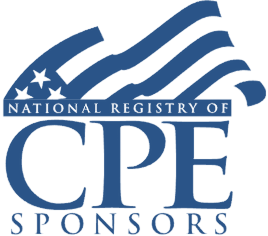Welcome! Save 30% on all CLE, CPE, and Professional Skills webinars, plus 15% off any annual pass with code HOLIDAY25
About the Course
Introduction
This webinar will emphasize the importance of a well-planned and disciplined due diligence review. Our panel of acquisition experts will outline the various elements of the due diligence process, identify common pitfalls in analyzing target investments, and explain the necessity of reverse due diligence review.
Description
Due diligence is the comprehensive review of a target company's financial, operational, customers and markets, legal, tax, HR, and IT functions before the completion of a transaction. CPAs and financial professionals are integral to the due diligence process. Due diligence is inherently different than an audit of financial statements. The latter is not concerned with future profitability levels or normalization of historical earnings.
Appropriately performed, a due diligence review will provide information to assess risks, help the purchaser understand the target business entirely, and, perhaps most importantly, help avoid surprises. Reviewers can employ specific techniques to unearth pertinent matters.
These include understanding drivers like quality of earnings a/k/a historical EBITDA and asking revealing questions to management and employees. One of the most common pitfalls of the process is allocating too little time to tax and financial matters. CPAs working with businesses and their owners must be prepared for potential mergers, acquisitions, and reviews.
Listen as our panel of transaction advisers explains the process of investigating companies, including techniques that can substantially improve due diligence reviews.
Presented By

Mr. Moore provides accounting due diligence services in connection with mergers and acquisitions, divestitures, and carve-out transactions initiated by private equity firms and strategic investors.

Mr. Suh is responsible for leading buy-side and sell-side transaction advisory services including due diligence assistance (accounting, financial, tax), purchase agreement vetting, closing and post-deal assistance to corporations, private equity investors and their portfolio companies. With over 14 years of international experience, Mr. Suh had been part of the transaction advisory services practices of two “Big 4” international accounting firms. Previously, he was the CFO of a private equity backed technology company which he guided through multiple acquisitions and ultimately a successful exit for the private equity sponsor and management shareholders. Mr. Suh has provided clients with assistance in over 150 transactions including significant software and technology experience where he advised on critical metrics such as recurring revenue streams, customer and user churn, bookings momentum, and customer acquisition costs. He has also worked on deals ranging in value from $5 million to $2 billion in other industries including: media/entertainment, telecommunications, life sciences, healthcare, business services and consumer products. In addition, he has advised on a number of cross-border transactions involving, Canadian, Australian, South American, European and Asian entities.
-
BARBRI is a NASBA CPE sponsor and this 110-minute webinar is accredited for 2.0 CPE credits.
Date + Time
- event
Tuesday, December 19, 2023
- schedule
1:00 p.m. ET./10:00 a.m. PT
- What is due diligence?
- Key objectives of the due diligence process
- Common due diligence pitfalls
- Key areas of focus during due diligence
- Quality of earnings insights
- Working capital
- Questions for management and employees
- Reverse due diligence
The panel will cover these and other critical issues:
- Techniques that can be applied to enhance due diligence reviews substantially
- Revealing questions to ask management and employees
- Determining a target's stand-alone value
- Identifying dealbreakers early on
- Assessing risks and transaction requirements
Learning Objectives
After completing this course, you will be able to:
- Understand the various elements of the due diligence process
- Recognize key drivers in quality of earnings
- Identify key pitfalls in analyzing target investments
- Select revealing questions to ask management and employees
- Assess risk and transaction requirements
- Field of Study: Auditing
- Level of Knowledge: Intermediate
- Advance Preparation: None
- Teaching Method: Seminar/Lecture
- Delivery Method: Group-Internet (via computer)
- Attendance Monitoring Method: Attendance is monitored electronically via a participant's PIN and through a series of attendance verification prompts displayed throughout the program
- Prerequisite: Three years+ business or public firm experience, preparing reviewed, compiled, and audited financial statements and the relative disclosures. Specific knowledge and understanding of GAAP, SSARS, and peer review policies.

BARBRI, Inc. is registered with the National Association of State Boards of Accountancy (NASBA) as a sponsor of continuing professional education on the National Registry of CPE Sponsors. State boards of Accountancy have final authority on the acceptance of individual courses for CPE Credits. Complaints regarding registered sponsons may be submitted to NASBA through its website: www.nasbaregistry.org.

BARBRI CE webinars-powered by Barbri-are backed by our 100% unconditional money-back guarantee: If you are not satisfied with any of our products, simply let us know and get a full refund. Contact us at 1-800-926-7926 .
Unlimited access to premium CLE courses:
- Annual access
- Available live and on-demand
- Best for attorneys and legal professionals
Unlimited access to premium CPE courses.:
- Annual access
- Available live and on-demand
- Best for CPAs and tax professionals
Unlimited access to premium CLE, CPE, Professional Skills and Practice-Ready courses.:
- Annual access
- Available live and on-demand
- Best for legal, accounting, and tax professionals
Unlimited access to Professional Skills and Practice-Ready courses:
- Annual access
- Available on-demand
- Best for new attorneys
Related Courses
Recommended Resources

Gain a Competitive Edge Through Efficient CPE Strategies
- Learning & Development
- Business & Professional Skills
- Career Advancement



